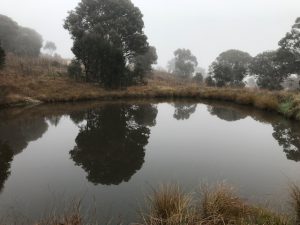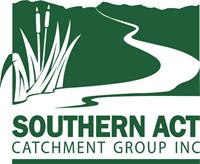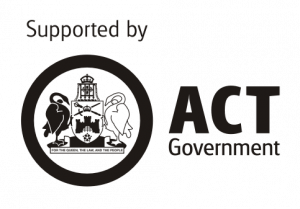The view from Coordinator’s desk


A big focus for Waterwatch in winter is the annual Platypus Month surveys run during August. Numbers of sightings were down this year at all monitoring points. High flows (look at the rainfall graph for August!) around all catchments are a likely cause. Burrow bound juveniles are noted as being at risk from sudden rises in river levels. However Josh and daughter Hannah got some fabulous footage of a platty swimming upstream at Point Hut Crossing.


Winter Volunteer update: A new Waterwatch team formed on Cooleman Ridge as three of the Parkcare members stepped up to replace long timer Pat Ryan. A new team also took over from Vera at the Conder Wetlands while she adopted a site closer to home on Tuggeranong Ck. Alannah also took on another site on Tuggeranong Ck after Ross Knee has stepped down after a couple of good year’s service and is joined by new members Rojee Byanju. Last, but by no means least Bonnie Scott takes on the Tharwa sites on the ‘bidgee and Gudgenby vacated by our Deb earlier this year.
Around the Rivers and Creeks

The Murrumbidgee river was nice and clear all winter apart from a bit of organic build up showing up as increased phosphorus levels in August. Tributaries such as Tuggeranong Creek released a lot of mud after the rain. Paddy’s river was no were near as turbid as it has been in previous wet seasons in spite of recent heavy rains and the Cotter river was lovely as the water kept pouring over the top of all 3 dams.
Around the Lakes and Ponds

The urban lakes continued to suffer from suburban runoff over winter even with the reduced rainfall in the first 2 months. In June there was significant pile up of leaves in Lake Tuggeranong’s northern pollution traps and the high nitrates levels revealed a lot of bacteria feasting on the organic waste. By July the lake was also very turbid from washed in sediment. Isabella Pond fared no better with high nitrates along with oil slicks from decaying algae. Stranger Pond had frogs calling early and was generally the best of the lakes though it was also high in nitrates at its inlet. The Cooleman Ridge dams (pictured) were acidic and high in organic waste by the end of the season.
Around Tidbinbilla Nature Reserve and Namadgi National Park

Pig activity was noted by Waterwatchers in Hospital creek in the south of Namadgi National Park. The central bog was a mess in July as lots of fine organic muck, ash and soot making water testing challenging. This also led to biological processes that sucked out the oxygen from the water. Mostly, though, the national park enjoyed the season with Little Dry Creek still flowing strongly. Tidbinbilla’s river and ponds were clear if slightly acidic over winter.
Around the schools


The Tidbinbilla Visitor Assist Program team held another well attended ‘World of Waterbugs’ school holiday event in July. Bruno (Ginninderra WW Coord) and I enlightened 100’s of students over 2 days at this year’s Careers Expo at Exhibition Park. I teamed up with Plaxy McCulloch(H2OK) and Lindsey File (Conservation Research) from ACT Government to deliver an education session on the function of Stranger Pond’s rain garden to Bonython Primary School. Two new schools in the new area of ‘Molonglo’ Charles Weston and Evelyn Scott Primary Schools received several education sessions by the combined WW Ed team of Bruno, Jed and myself, along with the entire Yr4 cohort from Red Hill Primary School on a bug catching visit to the Cotter. A research project by ACT Science Mentors program Yr10 Amaroo HS student Samrath Kaur into global warming and water pollution continued with my support, and Calwell and Alfred Deakin High Schools were also supported with waterwatch equipment.
Martin Lind.



